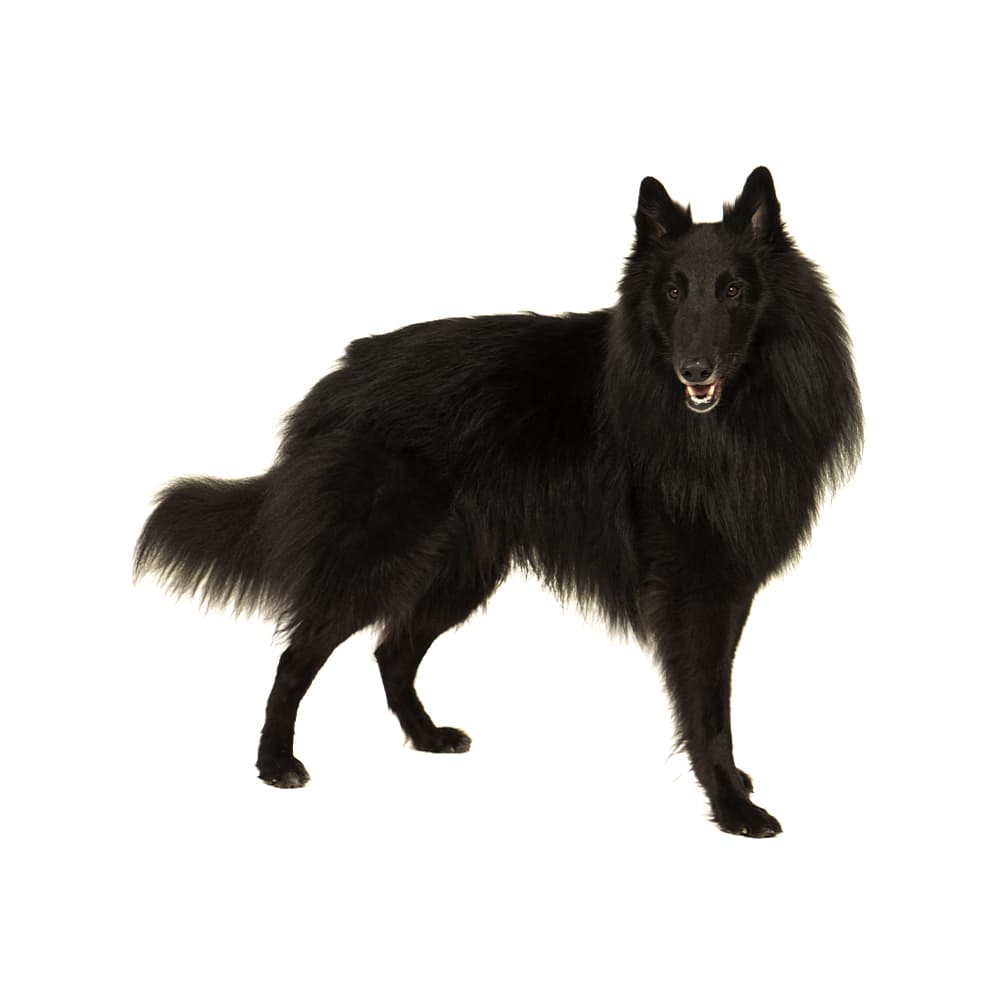Discover your dog's connection to this breed and 200+ others


Discover your dog's connection to this breed and 200+ others



The Belgian Groenendael, also known as the Belgian Sheepdog, is one of four varieties of Belgian herding dogs that originated in the late 19th century. The others include the Belgian Tervuren, the Belgian Malinois, and the Belgian Laekenois. Anatomically these breeds were the same, the difference lies in their coat textures, colors, and length. The Groenendael was named after the village of Groenendaal in Belgium, where its development as a distinct breed began. Belgian Groenendaels were initially bred to herd sheep, and their development was significantly influenced by Nicholas Rose, a breeder in the Groenendael region, who, in 1893, selected dogs that displayed the best working abilities and physical traits suitable for herding. By the 20th century, the Belgian Sheepdogs were used outside the pastures of Belgium in Paris and New York as police dogs. They were also employed as border patrol dogs looking for smugglers. During World War I they were used as messengers, ambulance dogs, and freighters of heavy gunnery.
Belgian Groenendaels can be affected by cardiomyopathy (dilated), cataracts, cerebellar ataxia (spongy degeneration), congenital nystagmus, ectodermal defect, elbow dysplasia, elbow dysplasia (fragmented coronoid process), epilepsy, gastric carcinoma, Gracilis or semitendinosus myopathy, hip dysplasia, hypothyroidism, hypotrichosis, macroblepharon, mucopolysaccharidosis VII, muscular dystrophy, optic nerve hypoplasia and micropapilla, pannus, patellar luxation, persistent pupillary membranes, prognathism, progressive retinal atrophy, retinal dysplasia, subaortic stenosis, and vitiligo. Genetic testing is recommended, including for the following additional conditions: hyperuricosuria, degenerative myelopathy, and progressive rod-cone degeneration.
Belgian Groenendaels are often described as highly intelligent, loyal, and protective. They are also known for being extremely active and require regular exercise to maintain their mental and physical health. Despite their high energy levels, Groenendaels are also known to be affectionate and good with families. However, they can be wary of strangers and require early socialization. As highly trainable dogs, they thrive in environments where they have a job to do and can sometimes be a challenge for first-time dog owners due to their high energy and intelligence.
In the United States, the Belgian Groenendael, the Belgian Tervuren, the Belgian Malinois, and the Belgian Laekenois are recognized as individual breeds by the American Kennel Club (AKC). However, in Europe, they are considered to be different types of the same breed, referred to collectively as the "Belgian Shepherd Dog".
The Belgian Sheepdog Club of America was formed in 1949.
https://www.akc.org/dog-breeds/belgian-sheepdog/
https://www.pawprintgenetics.com/products/breeds/117/
https://www.petmd.com/dog/breeds/c_dg_belgian_sheepdog
Recommended by top vets with decades of experience
21 breeds
64 genetic health markers
50 genetic trait markers
